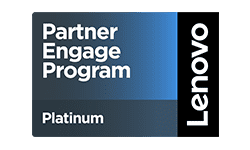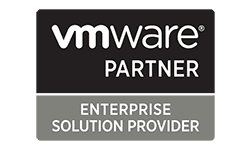Authentic Assessment in a Digital World
Allowing Students to Choose Their Own Path to Success
Carely Kimball, Media Specialist
5 Min Read
Authentic assessment can be difficult to envision as the world moves more into a digital space. However, true authentic assessment may be easier to achieve now more than ever. With the expansion of the virtual world comes a flood of unique creative tools students can utilize that cater to the way that an individual learns best. As educators, we are on the horizon of a learning revolution and should work to embrace new, student-led educational exploration through intuitive technologies.
What is Authentic Assessment?
Authentic assessment, popularized by Grant Wiggins, focuses on demonstrating competencies as they take place in—or in an environment emulating—the real-world. Wiggins identifies 27 characteristics of authentic assessment, including that they:
- Are appropriately public,
- Do not rely on unrealistic, arbitrary time constraints,
- Are not “one shot,” but are process-based,
- Are contextualized and complex, not “atomized” into isolated objectives,
- Are representative of challenges of the field or subject,
- Involve essential criteria, not what is easily scored,
- Allow appropriate choice for students to express their style and interests,
- Uses rubrics for transparency of expectations and evaluations,
- Incorporate self-reflection and meta-cognitive exploration,
- Allow for feedback, practice and second chances, and
- Make self-assessment part of the assessment.
Dr. Peter Selkin explains an alternative assessment technique he uses in a physics class.
The Benefits of Authentic Assessment
Authentic assessment has become a praised pedagogy since it was first coined in 1989. Followers of the method have identified numerous benefits seen in classrooms over the past three decades. Striving to build a culture of integrity and inquiry in the classroom is always recommended and authentic assessments will naturally make it more difficult, if not impossible, for students to utilize academic dishonesty.
This approach provides more true and direct measures of success. On the contrary, traditional tests and quizzes can be misleading in assessing proficiency and inaccurate in predicting performance. Integration is more streamlined as well, bridging gaps between teaching, learning and assessment. Establishing that learning is an ongoing process, authentic assessment demonstrates mastery at the point of assessment and encourages students to create habits of mind that will serve them well in their future endeavors.
A Path Forward
COVID-19 stimulated new thinking as well as different forms of assessment. Educators, now more than ever, are thinking about what is assessed, when, and how. It is time for a renaissance in assessment, according to JISC, a United Kingdom based membership hub for technology innovation in higher education.
The features of this renaissance are likely to include five key shifts:
A shift from an information-based assessment, “can you correctly recollect the information shared in class and in the textbook?,” to assessment based on knowledge in use such as “show me you know what to do with the information shared in class and in the textbook when given a relevant problem or challenge.”
A shift from multiple choice and written assessments to a variety of assessments, such as oral presentations, video-based assessment, or producing an artifact that demonstrates mastery of knowledge and skill.
A shift from classroom-based assessment to assessment in the community, workplace, or natural setting.
A shift toward assessment on demand, “I am ready for my assessment now!”
A shift from instructor marked assessments to a combination of instructor, peer, and technology marking.
Not only does this shift create more opportunities for students to define their own success, but encourages engagement, fulfillment, and a love of learning. When students feel empowered to guide their own learning and path to achievement, it leads to personal growth and the ability to discover skills and interests earlier on.
Teachers also thrive in classrooms that focus on authentic assessment. When you allow students the opportunity to apply their knowledge, rather than simply recalling it to answer a question on a test, authentic assessment often tells a teacher more about how much the student really understands, according to The Classroom.
Authentic assessment takes the monotony of “teaching for the test” out of the classroom. With this student-led approach, teachers often see their classrooms brought back to life. Not only do students have more fun and look forward to participating in the learning environment but they also retain the material taught rather than the alternative of short term memory usage when “cramming” for a test.
Integrating Technology and Authentic Assessment in the Classroom
When looking at authentic assessment through a digital lens, the options seem endless. There are so many technological tools available that can help classrooms excel in authentic assessment.
Promethean, a Learning Management System, makes interactive displays and teaching software that drive breakthroughs for teachers, students, and colleagues around the world. Tools like Promethean naturally encourage student creativity and streamline authentic assessment within the classroom.
Keeping a classroom of remote students engaged and interested is a tough task, especially when some students may be shy or just unwilling to share. ViewSonic is attempting to solve that problem with innovative digital classroom tools, like myViewBoard Suite, that offer teachers and students the flexibility needed for authentic assessment.
Epson’s BrightLink Interactive Displays offer teachers and students the opportunity to transform the classroom into an immersive collaborative environment where productivity is enhanced, creativity is on display, and participants are fully engaged.
As students spend more time online, safety has become a concern for schools and families alike. Linewize, a digital student safety platform, combines technology with world leaders in online safety education, IT administration, teaching, and student safeguarding to help schools, students and families develop better digital habits and better communities.
Linewize offers a system called Family Zone Community that helps districts teach digital safety through a parent app, online safety hub, parent, student, teacher, counselor webinars and more.
The world is only going to continue on the path toward digitalization. It is essential that educators prioritize technology within authentic assessment, so students are prepared to utilize the digital tools they are certain to come across in their future ventures.




